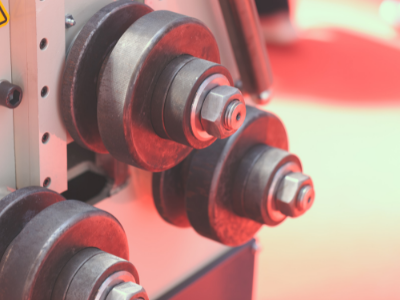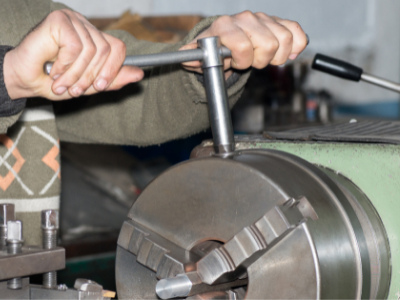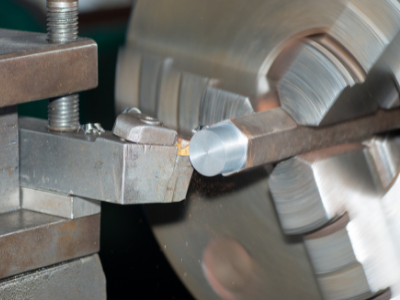Unison Tek is specialized in the fields of CNC lathes, milling machines. Our experienced engineering team had made many kinds of precision metal part with high tight tolerance. Welcome to Taiwan to visit our factory.
What is metal processing?
Metal processing is a process technology for processing metal materials into individual parts, components, or large structures. Whether it is from large ships, bridges, to precision engine parts, and exquisite jewelry, metal processing parts are needed.

The history of metal processing from human production to machine production
Before the industrial revolution, metal processing was still in the stage of using human processing, for example, using silver to beat all kinds of silver tableware; the casting method of metal processing is also relatively ancient technology.
Originally, parts were processed manually in the early stages of the industrial revolution.
During the industrial revolution, in order to manufacture a stronger and more powerful steam engine, stricter tolerances and parts matching were required, which drove the factory to devote itself to the development of various machine tools and parts.
The invention of machine tools allowed machines to make machines, and the era of factory explosions followed.
After the electricity became common, the power of the machine tool was provided by an electric motor, which could speed up the processing speed.

Use machine tools to manufacture metal parts to improve accuracy and speed According to the degree of computerization, machine tools can be divided into:
- (1) Traditional metal cutting machine (fully controlled by hand)
- (2) Numerical control NC (no CNC, but automatic control)
- (3) Computer numerical control CNC (complete computer control) machine tool.
(1) Traditional metal cutting machine
The metal to be processed on the machine tool is called the "workpiece", and the tool used to cut the workpiece is called the tool. The machine tool provides power to cause the relative movement of the workpiece and the tool, and precisely controls the relative movement to remove unnecessary parts on the workpiece.
Advantages: Simple products can be processed, accuracy requirements are not high, processing can be fast, but someone needs to look after the machine.
The disadvantage is that each action such as cutting, cutting, and drilling is performed by individual machines, or can only be used for simple modeling and parts with large tolerances. If you want to make high-precision parts, first go to the factory to see if it is a CNC model and whether it has at least 2.5D testing equipment.
(2) Numerical control NC (no CNC, but automatic control)
CNC machine tools refer to machine tools that can be processed automatically through precise instructions edited in advance.
To put it simply, numerical control uses electronic control signals to control some machine processing actions, as long as a series of instruction codes composed of characters, numbers, symbols, etc. are input to control various actions of the machine.
These command codes are converted into two electronic control signals, pulse and ON/OFF.
The pulse output signal is used for the positioning and feed speed control of the spindle and the workpiece.
The ON/OFF output signal performs the following functions: (1) Control the spindle rotation speed and direction (2) Control the cutting fluid switch (3) Selection of cutting tools (4) Others, such as pause, selective pause, automatic clamping and release. The appearance of a typical CNC machine tool, the processing area is located in the machine.
The emergence of CNC machine tools is also a machine developed to improve precision. When the United States produced helicopter propellers in the 1940s, a large number of precision machined parts were required.
The U.S. Air Force commissioned mechanical engineers from all walks of life to find a way. Finally in 1947, John T. Parsons began to use a computer to calculate the cutting path of a machine tool, and then cooperated with the Massachusetts Institute of Technology to combine the numerical control system with the Cincinnati company's milling machine to develop the first NC machine tool.
Later, in 1958, Parsons and Kearney & Trecker successfully developed a machining center machine with an automatic tool changer. Massachusetts Institute of Technology has also developed APT (Automatic Programming tools).
In 1959, Fujitsu of Japan made two major breakthroughs for numerical control: the invention of a hydraulic pulse motor and a pulse tweening circuit with algebraic calculation method. This speeds up the progress of numerical control.
(3) Computer numerical control CNC (complete computer control) machine tool
From 1960 to 2000, the numerical control system was extended to other metal processing machines. Until the computer microprocessor is applied to numerical control, not only can the working mother machine be directly operated manually, but also can be added with automatic control, which greatly improves the function.
This type of system is called computer numerical control (CNC). During this period, new fast, multi-spindle machine tools appeared.
In particular, Japan successfully broke the traditional form of machine tool spindle, moved the machine tool spindle with a spider-like device, and controlled it with a high-speed controller. It is a fast, multi-axis machine tool.
The CNC machine also allows a part to be made. It is not only the job of the technician, but also the programmer.

Advantage:
- High efficiency, high quality, high yield. It is especially obvious when the shape of the finished product is complicated and delicate.
- Increase working hours and increase machine utilization rate (can still get off work unattended after work)
- Diversified processing. The unit cost can be reduced in a small number of diversified production modes.
- The data is easy to store and modify.
- If the program is well designed, it can be used universally for machine tools at different times and places.
- Produce the same product without redesigning.
- Reduce fixtures and fixtures. Therefore, the upfront cost and preparation time are reduced.
- It can automatically change tools, feed materials, etc., with a higher degree of automation.
- "Adaptive control" maintains the machine tool in the best production conditions.
- Long tool life.
Disadvantages:
- The initial purchase cost of CNC machine tools is high.
- The programmer must have knowledge of processing and operation.
- The equipment is sophisticated and complex, and the maintenance and maintenance costs are high.
- Rely on programmers and mechanical maintenance professionals. The training of such personnel is more difficult than that of ordinary technicians.
Get more info, please visit our CNC Turning Parts or Products.
Contact us for your customized metal parts.